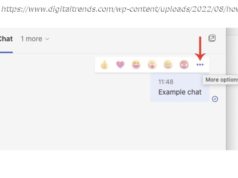Adobe’s Project Rush is a new non-linear editor (NLE) that’s cross-platform and cloud-powered, with an emphasis on ease of use.
Adobe’s ever-evolving Creative Cloud suite has some of the most powerful production software in the business, but it can be a little overwhelming for newcomers. There’s Premiere, Audition, and AfterEffects, to name a few, each with powerful tools that can take months (or even years) to master. To address the needs of newbies who edit video on their phones just as often as on their PCs, the San Jose company is taking the wraps off a new product — Project Rush — that combines the best of its portfolio in one.
Project Rush, which will launch in beta in the coming weeks, is a new non-linear editor (NLE) that’s cross-platform and cloud-powered, with an emphasis on ease of use. The team honed in on three core goals during development: designing a user interface that’s “welcoming” and “intuitive”; integrating Adobe Technologies like Adobe Sensei, its artificial intelligence platform; and building a suite of powerful publishing tools.
“A new user, from the first time they launch [Project Rush], can get a high-quality video in three minutes or less,” said Steve Forde, general manager of emerging products at Adobe, during a pre-briefing. “It’s an identical product with the same features on iOS, Android, Windows, and Mac. You can jump back and forth and it automatically synchronizes.”
On Android and iOS, kicking off an edit in Project Rush begins with selecting video clips from the app’s Locations screen or from Adobe Stock, a paid library of photos, vectors, illustrations, videos, templates, and 3D assets. Creative Cloud and Dropbox users can import footage and audio from their respective cloud storage lockers.
The user interface is divvied up into three parts. The preview window takes up the top third of the screen, along with playback controls like play, pause, fast forward, and rewind. The timeline is in the middle, and below it sits a carousel of menus for fiddling with transition animations, color grading, audio, transformations, aspect ratio adjustment, title cards, and Motion Graphics Templates.
Project Rush on mobile is optimized for touchscreens. Tapping and dragging on the end of a video clip, audio clip, or effects track adjusts its length, and selecting the center allows you to move it forward or backward in the timeline. It’s a seamless transition to desktop — project files are synced to the cloud and associated with your Adobe ID so that when you sign in, you’ll be able to pick up where you left off.
The Project Rush clients for Windows and Mac are cut from the same aesthetic cloth as the mobile apps, except that they take advantage of the added screen real estate. There’s an expanded preview window, and the toolbar is tucked away unobtrusively in the right-hand corner.
As on mobile, there’s a full array of tools and presets available (including the same color grading technology that’s built into Premiere Pro), and a sample library of videos from popular YouTubers. There’s also an auto-ducking feature — a carryover from Audition — that leverages the power of Adobe Sensei to automatically generate clip volume keyframes from music that reduce the volume when dialogue, sound effects, and other audio elements are present.
When it comes time to publish a project, Project Rush’s Share menu provides one-click access to platforms like Twitter, Facebook, Snapchat, and YouTube. It even supports native YouTube features like video scheduling and thumbnail selection.
Forde said the first release of Project Rush, which will be available by the end of 2018, is just the start. Adobe’s working toward compatibility with more devices, including laptops running Google’s Chrome OS. “With Project Rush, we’re enabling high-quality content delivered at scale in a way that’s never been done before,” he said.






